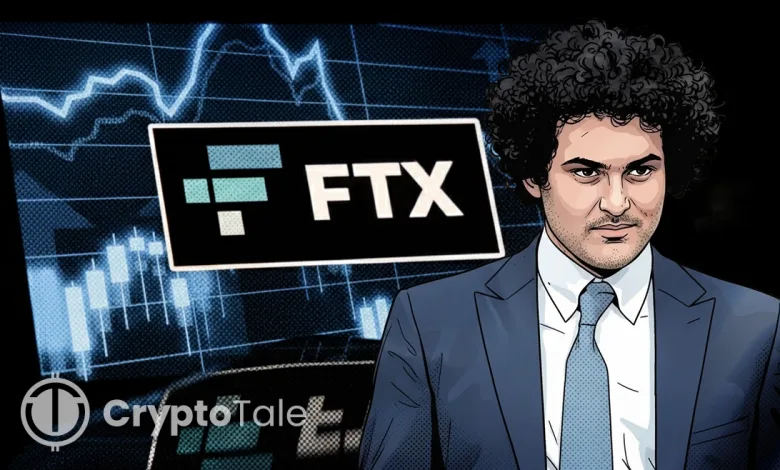SBF Insists “FTX Was Never Insolvent” in New Post

- Bankman-Fried says FTX had $25B in assets and wasn’t insolvent during the 2022 collapse.
- His team blames lawyers for forcing a bankruptcy that worsened FTX’s liquidity crisis.
- Experts say asset recoveries don’t erase fraud tied to FTX’s missing customer funds.
Sam Bankman-Fried has raised debate over the 2022 FTX collapse, claiming the exchange was never insolvent. On Thursday, an account linked to the imprisoned founder shared a 14-page document on X, asserting that FTX had $25 billion in assets and $13 billion in liabilities when it filed for bankruptcy. He blames external legal counsel for leading to bankruptcy, which he calls unnecessary.
SBF Team Argues Legal Missteps Sparked Bankruptcy
According to the document, Bankman-Fried and his team allege FTX faced only a temporary liquidity crunch, not insolvency. They claim “FTX was never bankrupt, even when its lawyers placed it into bankruptcy,” insisting the company had “enough assets to repay all customers.”
The team argues that an abrupt intervention by FTX’s external counsel disrupted recovery efforts that were “on track to be resolved by the end of the month.” The paper details that the exchange owed $8 billion to customers at the time of its bankruptcy filing but says the funds “never left.”
It further states that approximately 98% of creditors have already received 120% repayment, with final payouts expected to reach between 119% and 143%. After paying $8 billion in claims and $1 billion in legal fees, the estate reportedly still holds $8 billion.
These claims support Bankman-Fried’s statements made earlier this year from prison, where he told political commentator Tucker Carlson that “there was enough money” to pay every creditor. He continues to maintain that the collapse resulted from panic withdrawals rather than fraudulent activity.
FTX Holdings and Valuations
The new document outlines what Bankman-Fried describes as FTX’s “true balance sheet” before its downfall. It claims that as of late 2022, the company held $25 billion in assets and $16 billion in equity value against $13 billion in liabilities. The document contended that if FTX and its trading arm, Alameda Research, had continued operating, their combined holdings could now be worth roughly $136 billion.
Among the assets listed are a $14.3 billion stake in artificial intelligence firm Anthropic, a $7.6 billion position in Robinhood, and investments in Ripple and Bitcoin mining firm Genesis Digital Assets. The FTX Recovery Trust recently sued Genesis Digital Assets to recover $1.15 billion allegedly misused under Bankman-Fried’s leadership.
The filing also suggests that the exchange’s native FTT token would be worth nearly $22 billion if the companies had survived. However, prosecutors during Bankman-Fried’s 2023 trial argued that FTT was used to inflate Alameda’s balance sheet, disguising financial shortfalls.
Public Reactions and Legal Ramifications
The release of the document quickly drew reactions across the crypto community. On-chain investigator ZachXBT accused Bankman-Fried of “twisting facts” and noted that creditors were repaid based on November 2022 crypto prices, not today’s higher values. Another commentator questioned why FTX filed for bankruptcy if it truly had sufficient assets.
Legal experts also weighed in, emphasizing that improved asset values do not negate earlier misconduct. One securities attorney stated that the recovery “doesn’t erase criminal liability or the events that caused the collapse.”
FTX’s estate has maintained that it maximized returns through asset monetization and litigation wins, ensuring faster payouts to creditors. Political discussions have resurfaced around Bankman-Fried’s potential pardon.
Conservative activist Laura Loomer recently alleged a campaign to persuade U.S. President Donald Trump to grant clemency to the former FTX CEO. The rumor followed Trump’s pardon of Binance founder Changpeng Zhao earlier this month after his conviction for anti-money laundering violations.
Court records show Bankman-Fried is serving a 25-year prison sentence issued in 2024 by U.S. District Judge Lewis Kaplan, along with an $11 billion forfeiture order. During sentencing, Kaplan remarked that “a thief who bets stolen money successfully still does not deserve leniency.”
Related: Trump Ends ‘War on Crypto’ with A Pardon To Binance Founder CZ
Creditors’ Recovery and Market Response
Reports indicate that FTX’s recovery has reached an unprecedented scale among crypto bankruptcies. The exchange’s estate now holds assets from digital tokens, equity, and cash, including $14.3 billion in Anthropic equity, $12.4 billion in Solana, $2.9 billion in SUI, and $2.3 billion in Bitcoin.
Although the company’s financial rebound has revived speculation about a potential FTX 2.0, skepticism is high. Many market participants argue that restored valuations cannot rewrite the events leading to the 2022 collapse. Solana, heavily tied to FTX’s holdings, rose briefly by 3% after the news but later stabilized.
Meanwhile, Sam Bankman-Fried’s renewed defense stands in contrast to the company’s past collapse and its current wealth. While the figures may support his solvency claims, the court verdict and public perception remain unchanged, showing how FTX’s legacy continues to divide opinion across the crypto sector.




